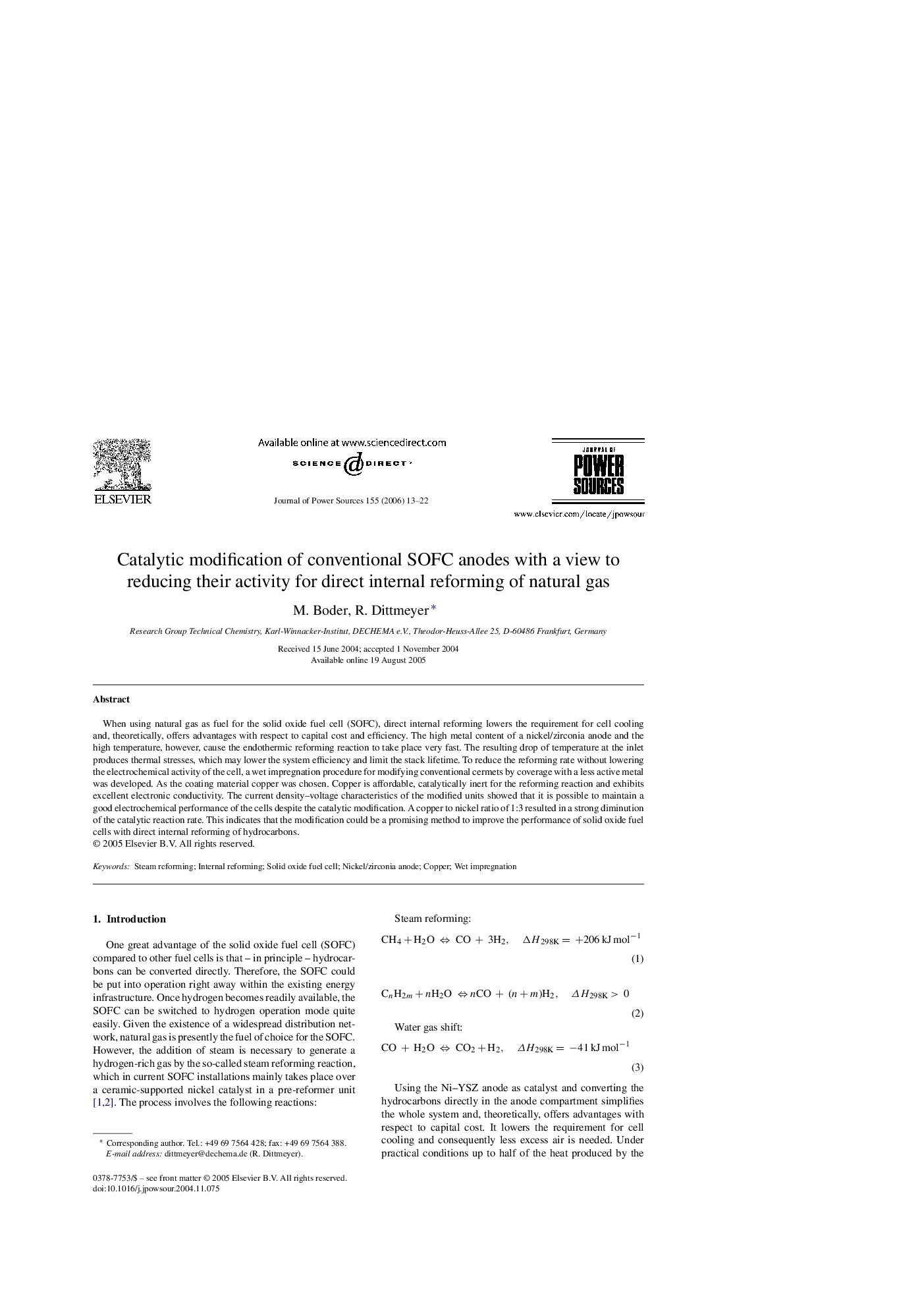| کد مقاله | کد نشریه | سال انتشار | مقاله انگلیسی | نسخه تمام متن |
|---|---|---|---|---|
| 1292727 | 973395 | 2006 | 10 صفحه PDF | دانلود رایگان |

When using natural gas as fuel for the solid oxide fuel cell (SOFC), direct internal reforming lowers the requirement for cell cooling and, theoretically, offers advantages with respect to capital cost and efficiency. The high metal content of a nickel/zirconia anode and the high temperature, however, cause the endothermic reforming reaction to take place very fast. The resulting drop of temperature at the inlet produces thermal stresses, which may lower the system efficiency and limit the stack lifetime. To reduce the reforming rate without lowering the electrochemical activity of the cell, a wet impregnation procedure for modifying conventional cermets by coverage with a less active metal was developed. As the coating material copper was chosen. Copper is affordable, catalytically inert for the reforming reaction and exhibits excellent electronic conductivity. The current density–voltage characteristics of the modified units showed that it is possible to maintain a good electrochemical performance of the cells despite the catalytic modification. A copper to nickel ratio of 1:3 resulted in a strong diminution of the catalytic reaction rate. This indicates that the modification could be a promising method to improve the performance of solid oxide fuel cells with direct internal reforming of hydrocarbons.
Journal: Journal of Power Sources - Volume 155, Issue 1, 18 April 2006, Pages 13–22